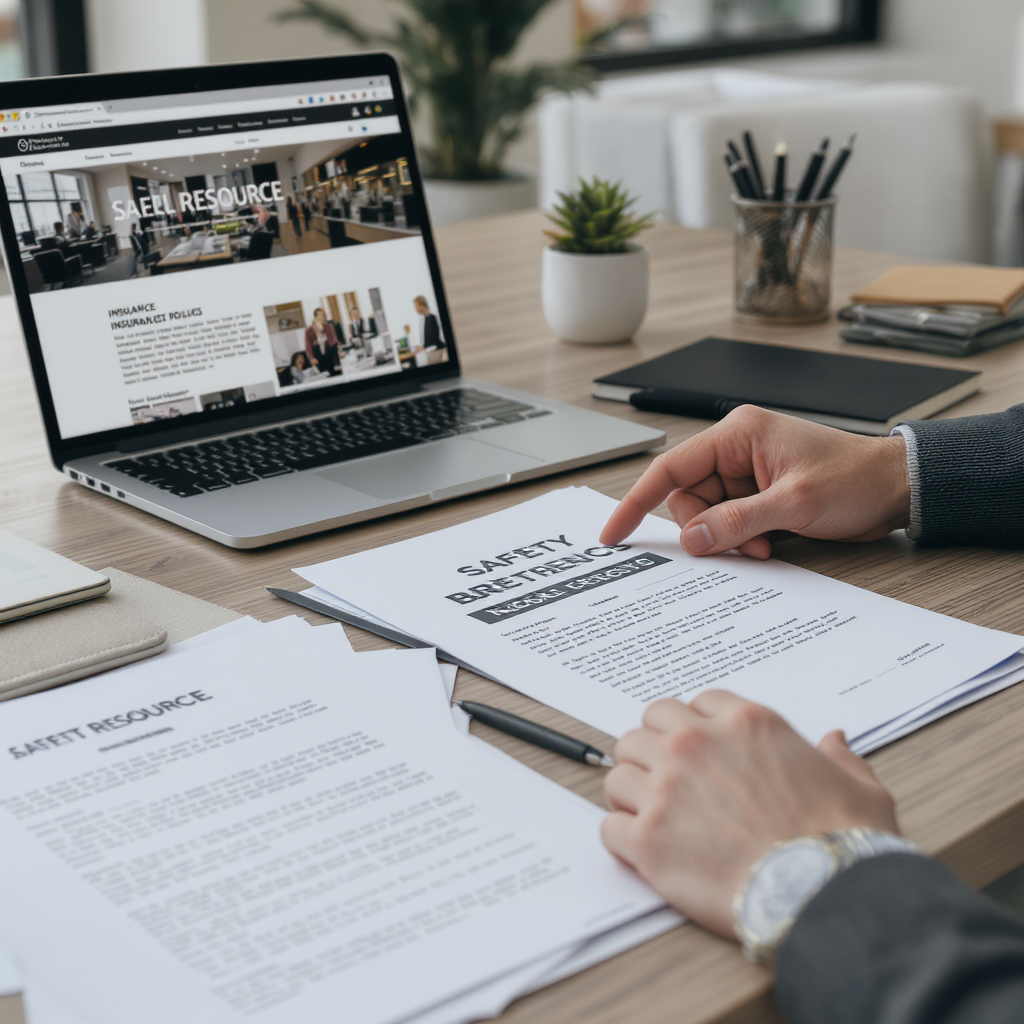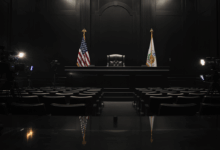Comprehensive Guide to Understanding Legal Implications of Accidents in the Entertainment Industry

Preparing to Address Legal Implications of Accidents in the Entertainment Industry
1. Understand the Basic Legal Frameworks
- Prerequisites: No prior legal knowledge needed.
- Tools: Access to reliable legal resources or consultation with an entertainment law professional.
- Steps:
- Learn about tort law, workers’ compensation, and industry regulations relevant to on-set accidents.
- Familiarize yourself with liability roles, mainly focusing on producers and crew supervisors.
Warning: Avoid relying solely on assumptions; always verify legal definitions and responsibilities from credible sources.
- Verification: Confirm understanding by summarizing key legal responsibilities in your own words.
2. Gather Necessary Safety and Legal Documentation
- Prerequisites: Access to company safety protocols, contracts, insurance policies.
- Tools: Document management system or organized physical filing.
- Steps:
- Collect all safety protocols, training records, equipment maintenance logs, and insurance policies.
- Review contracts for clauses on liability, waivers, and insurance coverage.
Warning: Missing documentation can weaken legal compliance and defense.
- Verification: Ensure every document is current, signed, and stored securely for easy retrieval.
3. Assemble a Legal and Safety Team
- Prerequisites: Contact list of legal experts and safety officers.
- Tools: Communication tools (email, phone), scheduling software.
- Steps:
- Identify and engage with legal professionals specializing in entertainment law.
- Designate safety officers responsible for enforcing protocols on set.
Warning: Delayed engagement can increase risk exposure.
- Verification: Confirm team commitment and schedule initial strategy meetings.
Implementing and Managing Legal Compliance to Minimize Accident Risks
1. Develop and Enforce Comprehensive Safety Protocols
- Prerequisites: Safety regulations knowledge, team commitment.
- Tools: Training materials, virtual reality simulators (if available), wearable safety devices.
- Steps:
- Design detailed safety procedures addressing common causes of accidents like stunts and slip hazards.
- Conduct regular risk assessments before shooting begins.
- Implement training sessions using advanced tools (e.g., VR for stunt rehearsals).
- Utilize wearable devices to monitor crew health during high-risk activities.
Warning: Skipping training or assessments increases accident likelihood.
- Verification: Maintain and review safety logs and incident reports for improvements.
2. Maintain Transparent and Detailed Documentation
- Prerequisites: Document management system.
- Tools: Digital or physical record-keeping tools.
- Steps:
- Record every safety meeting, training session, and equipment check.
- Document any incidents immediately with detailed descriptions.
- Store documents securely and ensure easy access for audits or legal review.
Warning: Incomplete records can hinder insurance claims and legal defenses.
- Verification: Perform periodic audits to ensure documentation completeness and accuracy.
3. Review and Update Contracts Regularly
- Prerequisites: Legal team involvement.
- Tools: Contract templates, legal review software.
- Steps:
- Ensure contracts clearly define safety responsibilities and liability waivers.
- Include clauses specifying insurance coverage requirements.
- Update contracts to reflect changes in legal standards or safety policies.
Warning: Outdated contracts can expose productions to unforeseen liabilities.
- Verification: Confirm all parties have signed the latest contract versions before production.
4. Proactively Manage Legal Risks Through Insurance
- Prerequisites: Understanding of insurance types relevant to production.
- Tools: Insurance broker contacts, policy documents.
- Steps:
- Obtain comprehensive insurance covering general liability, workers’ compensation, and errors and omissions.
- Regularly review policies to ensure coverage matches production needs.
Warning: Underinsurance can lead to significant financial losses.
- Verification: Verify active policies and confirm coverage limits with your insurer.
5. Handle Incidents with Legal and Ethical Responsibility
- Prerequisites: Incident response plan.
- Tools: Incident reporting forms, legal counsel.
- Steps:
- Respond immediately to accidents with medical aid and secure the scene.
- Document the incident thoroughly.
- Notify legal counsel and insurance providers.
- Consider transparent communication balanced with confidentiality to protect reputations.
Warning: Concealing incidents may lead to legal penalties and industry distrust.
- Verification: Follow up on incident investigations and implement corrective measures.
Verifying Compliance and Continuous Improvement
1. Conduct Regular Safety Audits and Legal Reviews
- Prerequisites: Audit checklist, legal guidelines.
- Tools: Audit software or manual checklists.
- Steps:
- Schedule periodic internal and external audits of safety practices and legal compliance.
- Review contracts and documentation for updates.
Warning: Neglecting audits can allow issues to persist unnoticed.
- Verification: Generate audit reports and track resolution of identified issues.
2. Train and Educate Staff Continuously
- Prerequisites: Updated training materials.
- Tools: Learning management system or in-person sessions.
- Steps:
- Provide refresher courses on safety protocols and legal responsibilities.
- Incorporate lessons learned from past incidents.
Warning: Outdated knowledge can compromise safety and compliance.
- Verification: Assess training effectiveness through quizzes or practical evaluations.
3. Foster a Culture of Safety and Accountability
- Prerequisites: Leadership commitment.
- Tools: Communication platforms, feedback systems.
- Steps:
- Encourage open reporting of hazards and near-misses without fear of reprisal.
- Recognize compliance and improvements publicly.
Warning: Ignoring crew concerns can lead to unresolved risks.
- Verification: Monitor incident trends and employee feedback for positive shifts.
By following this comprehensive, step-by-step guide, stakeholders in the entertainment industry can confidently prepare for, implement, and verify legal compliance related to on-set accidents. This guide is designed to be accessible for beginners and includes practical troubleshooting tips, ensuring safer productions and minimized legal risks.
Advanced Risk Management Strategies for Legal Compliance
Implementing Predictive Analytics for Accident Prevention
Detailed Implementation Steps
- Integrate data collection systems to gather historical on-set accident reports, safety audit results, and crew health metrics.
- Utilize machine learning models to identify patterns and high-risk scenarios unique to your production environment.
- Develop predictive dashboards that provide real-time risk assessments and alerts to production managers.
- Continuously update models with new data to refine predictive accuracy.
Warning: Ensure data privacy compliance when handling personal health information and sensitive incident data.
- Verification: Conduct pilot studies comparing predicted risks with actual incident occurrences to validate model effectiveness.
Strategic Legal Risk Mapping and Scenario Planning
Detailed Implementation Steps
- Conduct comprehensive legal risk assessments using scenario analysis techniques focusing on possible accident outcomes and their liabilities.
- Map stakeholder responsibilities and potential exposure in complex production setups involving multiple contractors.
- Develop contingency plans and rapid response protocols tailored to identified high-risk legal scenarios.
-
Regularly simulate incident response drills incorporating legal consultation to stress-test preparedness.
-
Verification: Review legal risk maps with in-house or external counsel for completeness and accuracy.
Advanced Contractual Risk Allocation and Negotiation Techniques
Detailed Implementation Steps
- Employ modular contract design allowing dynamic allocation of liability and insurance obligations based on specific production phases or activities.
- Use indemnity clauses with precise language to limit exposure while complying with local jurisdictional requirements.
- Negotiate layered insurance requirements with third parties, ensuring comprehensive coverage overlaps and gaps are addressed.
- Incorporate arbitration and mediation clauses to streamline dispute resolution.
Warning: Overly restrictive clauses may deter talent and vendors; balance risk management with industry standards.
- Verification: Have contracts reviewed by specialized entertainment law attorneys with experience in complex productions.
Optimization of Safety Protocols through Technology Integration
Leveraging IoT and Wearable Technologies for Real-time Hazard Monitoring
Detailed Implementation Steps
- Deploy IoT sensors on equipment and critical set areas to monitor environmental factors such as temperature, noise, and structural stability.
- Equip crew members with wearable devices that track vital signs and fatigue levels to prevent health-related accidents.
- Integrate sensor data into centralized safety management platforms with AI-driven anomaly detection.
-
Establish automatic alert systems for immediate intervention when thresholds are exceeded.
-
Verification: Periodically test sensor accuracy and system responsiveness under simulated emergency conditions.
Implementing Virtual and Augmented Reality (VR/AR) for Advanced Safety Training
Detailed Implementation Steps
- Develop VR/AR modules replicating complex stunts and hazardous scenarios to provide immersive, risk-free training experiences.
- Use performance analytics within training simulations to identify and address individual skill gaps.
- Incorporate scenario-based assessments to certify crew readiness before on-set execution.
-
Update training content dynamically to reflect evolving production challenges and regulatory changes.
-
Verification: Collect feedback and performance data from trainees to continuously optimize training effectiveness.
Automating Documentation and Compliance Reporting
Detailed Implementation Steps
- Implement cloud-based document management systems with automated version control and access logs.
- Use AI-powered tools to extract and summarize key compliance metrics from safety reports and incident logs.
- Automate reminders for contract renewals, safety training refreshers, and insurance policy reviews.
-
Integrate compliance reporting with regulatory bodies where digital submissions are permitted.
-
Verification: Conduct quarterly audits of automated systems to ensure data integrity and regulatory compliance.
Expert Troubleshooting and Continuous Improvement Protocols
Root Cause Analysis (RCA) with Cross-disciplinary Teams
Detailed Implementation Steps
- After any incident, convene a multidisciplinary team including legal counsel, safety officers, and production leads.
- Use structured RCA methodologies such as the “5 Whys” or Fishbone Diagrams to identify underlying causes.
- Develop and implement corrective action plans targeting systemic issues rather than symptoms.
-
Track the effectiveness of interventions over time with key performance indicators (KPIs).
-
Verification: Regularly review incident trends and RCA outcomes in executive safety meetings.
Advanced Compliance Gap Analysis and Benchmarking
Detailed Implementation Steps
- Perform detailed comparisons of existing safety and legal compliance practices against industry-leading standards and peer productions.
- Utilize third-party audits to identify unnoticed vulnerabilities.
- Prioritize gaps based on risk exposure and resource availability.
-
Develop a strategic roadmap for closing compliance gaps with assigned responsibilities and timelines.
-
Verification: Update gap analysis annually and adjust the roadmap accordingly.
Continuous Feedback Loops with Crew and Stakeholders
Detailed Implementation Steps
- Establish anonymous digital platforms for crew members to report hazards, near-misses, and suggestions.
- Schedule regular interactive forums to discuss safety culture and legal concerns openly.
- Implement a structured system to evaluate and act on feedback promptly.
-
Publicly recognize contributions that lead to meaningful safety improvements.
-
Verification: Monitor participation rates and correlate feedback trends with incident statistics to gauge cultural shifts.
These advanced methodologies empower entertainment industry professionals to elevate their legal compliance and accident prevention frameworks to expert levels, ensuring not only regulatory adherence but also fostering a resilient and proactive safety culture across productions.

Celebrating Your Achievement and Verifying Mastery
Reflect on Your Accomplishment
Congratulations on completing this comprehensive guide on the legal implications of accidents in the entertainment industry! You’ve developed a solid foundation in understanding legal frameworks, safety protocols, documentation, risk management, and advanced compliance strategies — essential skills for safeguarding productions and fostering a culture of accountability.
Skill Verification Checklist
- Confidently explain key legal concepts such as liability, workers’ compensation, and contract clauses relevant to entertainment accidents.
- Effectively gather, organize, and maintain safety and legal documentation.
- Implement advanced safety protocols, including technology integration like IoT and VR training.
- Conduct legal risk assessments and develop strategic response plans.
- Manage incident responses ethically and compliantly.
- Utilize continuous improvement methods such as audits, root cause analyses, and crew feedback.
Use this checklist to self-assess your readiness to apply these skills in real-world scenarios. If you find gaps, revisit specific sections or seek further training.
Pathways for Continued Learning and Skill Development
Expand Your Expertise
- Enroll in specialized entertainment law courses or certifications to deepen your legal knowledge.
- Explore workshops on emerging safety technologies and data analytics applications in risk management.
- Engage in scenario-based training exercises or simulations to sharpen incident response capabilities.
Stay Current with Industry Trends
- Subscribe to industry newsletters and legal bulletins focusing on entertainment law and workplace safety.
- Follow expert blogs and forums related to production safety and compliance.
- Attend conferences and webinars to network and learn about evolving regulations and best practices.
Develop Leadership and Communication Skills
- Practice fostering a safety culture by improving communication strategies and crew engagement techniques.
- Learn negotiation skills for contract management and risk allocation with stakeholders.
Resources for Ongoing Support and Troubleshooting
Reliable Learning and Support Platforms
- Entertainment Law Associations: Access legal updates and professional advice.
- Safety Management Software Providers: Utilize tools for documentation and real-time monitoring.
- Online Communities: Join forums such as Production Safety Network or industry LinkedIn groups for peer support.
Expert Assistance
- Consult with entertainment law professionals for contract reviews and complex legal scenarios.
- Collaborate with certified safety officers or consultants for advanced risk assessments and audits.
Troubleshooting and Continuous Improvement
- Implement structured feedback loops with your team to identify and address emerging risks.
- Use root cause analysis methods and benchmarking to refine your safety and legal compliance programs.
“Your commitment to mastering these critical skills not only protects your productions but also contributes to a safer, more responsible entertainment industry. Keep building on this foundation — your expertise is a vital asset.“
Remember, learning is a continuous journey. Stay proactive, seek out new knowledge, and engage with your professional community to maintain excellence in legal compliance and accident prevention.





